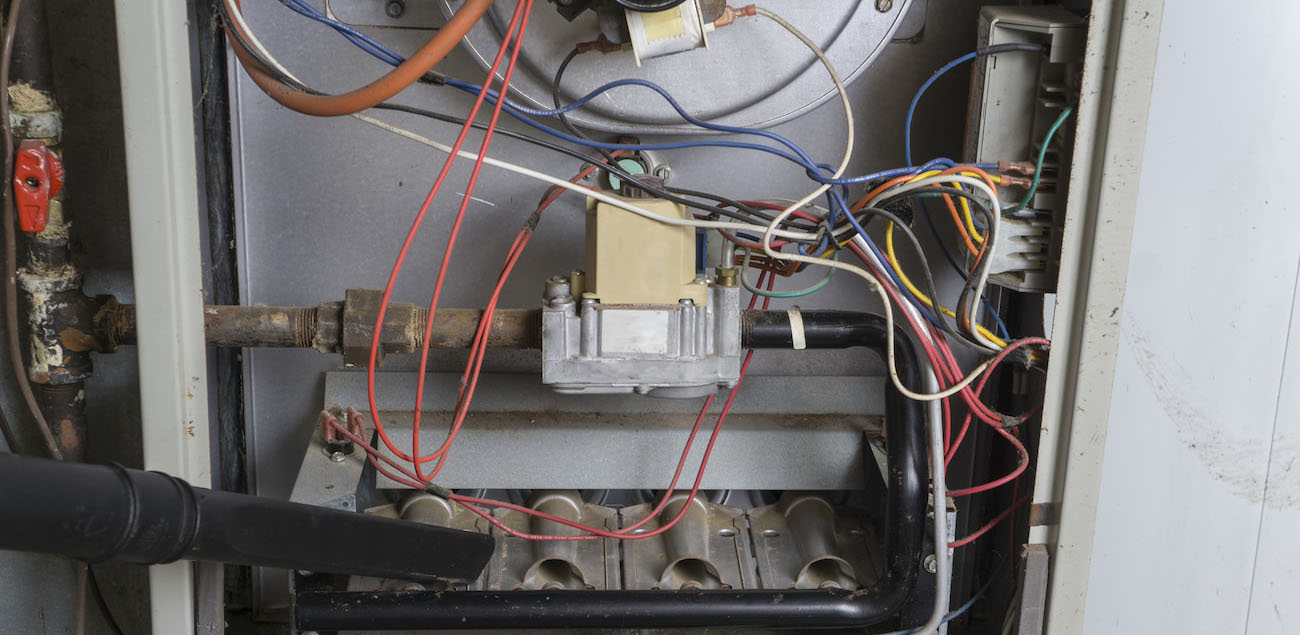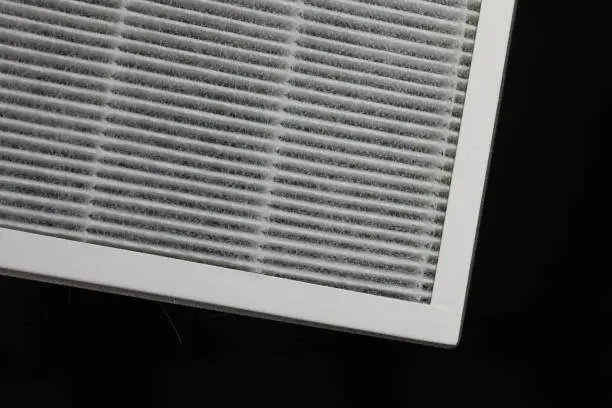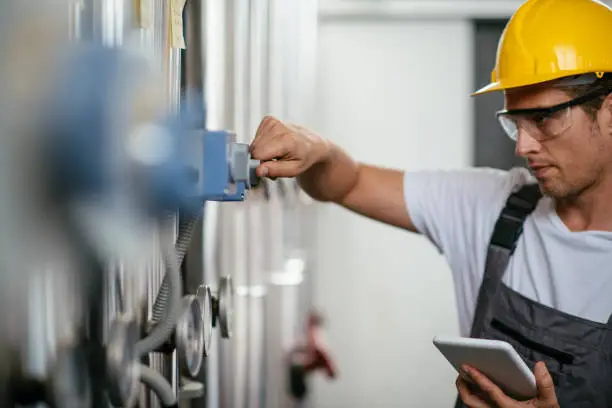
Table of Contents
Your HVAC system plays a crucial role in keeping your indoor environment comfortable, and at the heart of its performance is a small yet mighty component – the furnace filter. In this guide, we’ll take you through the essential steps to ensure that your furnace filter is not just in place but optimally installed, contributing to better air quality and the overall efficiency of your HVAC system.
Types of Furnace Filters
As we embark on the journey of understanding these essential components, it becomes imperative to distinguish between their various types. Each type possesses distinctive attributes that contribute to the overall efficacy of your indoor air quality. Let’s take a look at the main types of the furnace filters.
Fiberglass Filters: A fundamental and cost-effective filtration solution, fiberglass filters excel in capturing larger airborne particles.
Pleated Filters: Characterized by an accordion-like structure, pleated filters offer heightened efficiency in trapping smaller particles, albeit at a marginally higher upfront cost.
HEPA Filters: Standing as the pinnacle of filtration technology, HEPA filters demonstrate unparalleled effectiveness in capturing minute particles. While they present a higher initial investment, their efficacy justifies the cost, making them a premier choice for those prioritizing superior air quality.
Find out what is the ideal furnace filter MERV rating in our previous article.
Ensuring a Secure Installation: Essential Safety Measures for Furnace Filter Replacement
Safety should always be the top priority when working with HVAC systems. Before you start to change furnace filters, take the following precautions:
- Power Down the Furnace: Before initiating any work, deactivate the power supply to the furnace. This minimizes the risk of electrical shock and ensures a safe working environment.
- Protective Gear: Equip yourself with appropriate protective gear, including gloves and safety glasses. These safeguards shield you from potential hazards like sharp edges and airborne particles.
- Refer to the Furnace Manual: Consult the manufacturer’s manual for your furnace. It contains vital safety guidelines specific to your unit, ensuring compliance with recommended procedures.
- Well-Ventilated Area: Perform the installation in a well-ventilated space. Adequate ventilation prevents the accumulation of airborne particles and enhances overall safety.
- Beware of Hot Surfaces: Furnace components may retain heat even when powered off. Exercise caution around these surfaces to avoid burns or injury.
- Secure Ladder Usage: If accessing high areas is necessary, use a secure ladder. Ensure its stability and proper placement to prevent falls or accidents during the installation process.
- Keep Work Area Clean: Maintain a tidy work area. Clearing away tools and debris reduces the risk of tripping hazards and fosters a more organized and safe environment.
- Emergency Preparedness: Familiarize yourself with the location of emergency shut-off switches and procedures. Knowing how to swiftly cut power in case of unforeseen circumstances adds an extra layer of precaution.
By diligently observing these safety precautions, you not only safeguard yourself but also enhance the overall efficiency and security of the furnace filter installation process.
How to Install a Furnace Filter: Step-by-Step Guide

Executing a precise and methodical installation of a furnace filter is paramount for the sustained performance of your HVAC system. Follow these detailed instructions to change furnace filters successfully:
1. Locate the Filter Slot
Begin by identifying the specific location of the filter slot on your furnace. This slot is typically positioned in close proximity to the return air duct or within the blower compartment. The filter slot serves as the designated enclosure for the furnace filter.
2. Turn Off the Furnace
As a crucial safety measure, deactivate the power supply to your furnace. Locate the power switch or circuit breaker dedicated to the furnace and switch it off to mitigate the risk of electrical shock during the installation process.
3. Remove the Old Filter
Delicately extract the existing filter from its slot, paying close attention to the directional indicators, commonly denoted by arrows. These arrows signify the correct furnace filter direction, ensuring optimal airflow and efficient filtration.
4. Clean the Filter Area
Prior to introducing the new filter, meticulously clean the filter area. Utilize a soft brush or cloth to remove accumulated dust and debris. This preparatory step is vital to prevent contamination and maintain the integrity of the newly installed filter.
5. Insert the New Filter
Slide the new filter into the designated slot, taking care to align it with the correct furnace filter direction indicated by the airflow arrows. A precise fit guarantees proper functioning and prevents air bypass.
6. Secure the Filter
If your filter is equipped with securing tabs, adhere to the manufacturer’s guidelines for their utilization. These tabs play a pivotal role in stabilizing the filter within the slot, preventing unintended displacement during the operation of the HVAC system.
7. Turn On the Furnace
Having successfully positioned and secured the new filter, proceed to restore power to the furnace. Reactivate the HVAC system to initiate the circulation of air through the newly installed filter, contributing to enhanced air quality within your living space.
For those who prefer professional assistance or encounter complexities during the installation, don’t hesitate to contact HVAC Service Solutions. Our expert team is ready to provide skilled and reliable furnace filter installation services for your peace of mind and optimal system performance.
The Crucial Benefits of Professional Furnace Filter Installation
Proper installation of a furnace filter is a pivotal aspect that profoundly influences the efficiency and longevity of your HVAC system. Professional furnace filter installation goes beyond the basics, ensuring that the filter is precisely positioned, securely fitted, and compatible with your specific system requirements.
One immediate benefit of professional installation is heightened system efficiency. A properly installed furnace filter facilitates unimpeded airflow, allowing your HVAC system to operate seamlessly. This not only optimizes energy efficiency but also reduces the strain on system components, ultimately extending the lifespan of your unit. Additionally, professional installers possess the expertise to select and install the most suitable filter for your system, considering factors like MERV ratings and compatibility.
By entrusting the installation to professionals, you not only reap the rewards of immediate performance enhancement but also pave the way for long-term cost savings and a healthier indoor environment.
Conclusion
The proper installation of furnace filters is an indispensable factor in fostering optimal indoor air quality. While our guide equips you with the knowledge for a successful DIY installation, never underestimate the impact of professional expertise. Entrusting the installation to professionals not only ensures precision but also unlocks the full potential of your HVAC system, contributing to a harmonious balance of comfort, efficiency, and longevity in your home.
Elevate your home’s comfort and efficiency by reaching out to HVAC Service Solutions. Contact us today for a seamless integration of professional care into your HVAC maintenance routine.
Frequent Asked Questions
What are the main types of furnace filters?
Furnace filters come in various types, including fiberglass filters for larger particles, pleated filters for smaller particles, and HEPA filters for superior filtration of minute particles.
Why is the MERV rating important for furnace filters?
The Minimum Efficiency Reporting Value (MERV) rating indicates a filter’s ability to capture particles. Knowing the ideal MERV rating helps choose a filter that balances air quality and system efficiency.
What safety measures should be taken during furnace filter replacement?
Essential safety measures include powering down the furnace, wearing protective gear, referring to the furnace manual, working in a well-ventilated area, being cautious of hot surfaces, using a secure ladder if needed, keeping the work area clean, and being prepared for emergencies.
Where is the filter slot located on a furnace?
The filter slot is typically located near the return air duct or within the blower compartment of the furnace. It serves as the designated enclosure for the furnace filter.
How do I clean the filter area before installing a new filter?
Use a soft brush or cloth to delicately clean the filter area, removing accumulated dust and debris. This step is crucial to prevent contamination and maintain the integrity of the newly installed filter.
What is the correct furnace filter direction, and why is it important?
Furnace filters have directional indicators, commonly denoted by arrows. These arrows signify the correct filter direction for optimal airflow and efficient filtration. Installing the filter in the right direction prevents air bypass.
Why is professional furnace filter installation beneficial?
Professional installation ensures precise positioning, secure fitting, and compatibility with specific system requirements. It enhances system efficiency, reduces strain on components, extends the system’s lifespan, and contributes to long-term cost savings and a healthier indoor environment.
How can HVAC Service Solutions assist with furnace filter installation?
HVAC Service Solutions offers skilled and reliable furnace filter installation services. Contact our expert team for professional assistance, ensuring a seamless integration of care into your HVAC maintenance routine.
Share


















